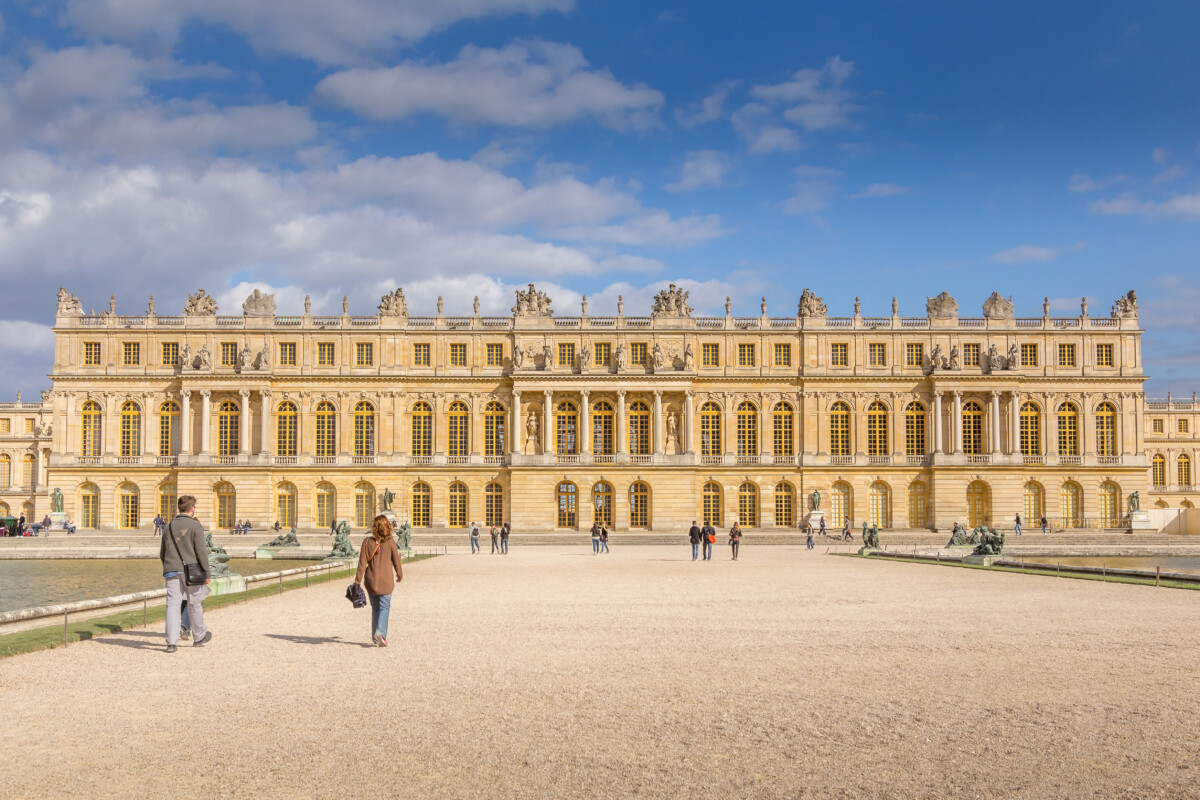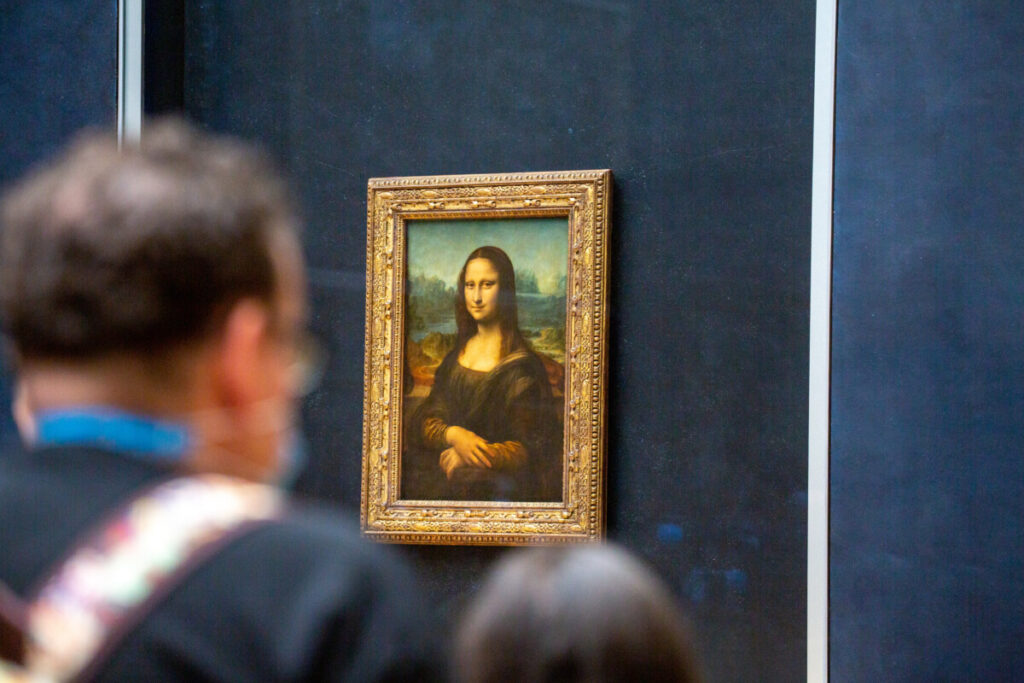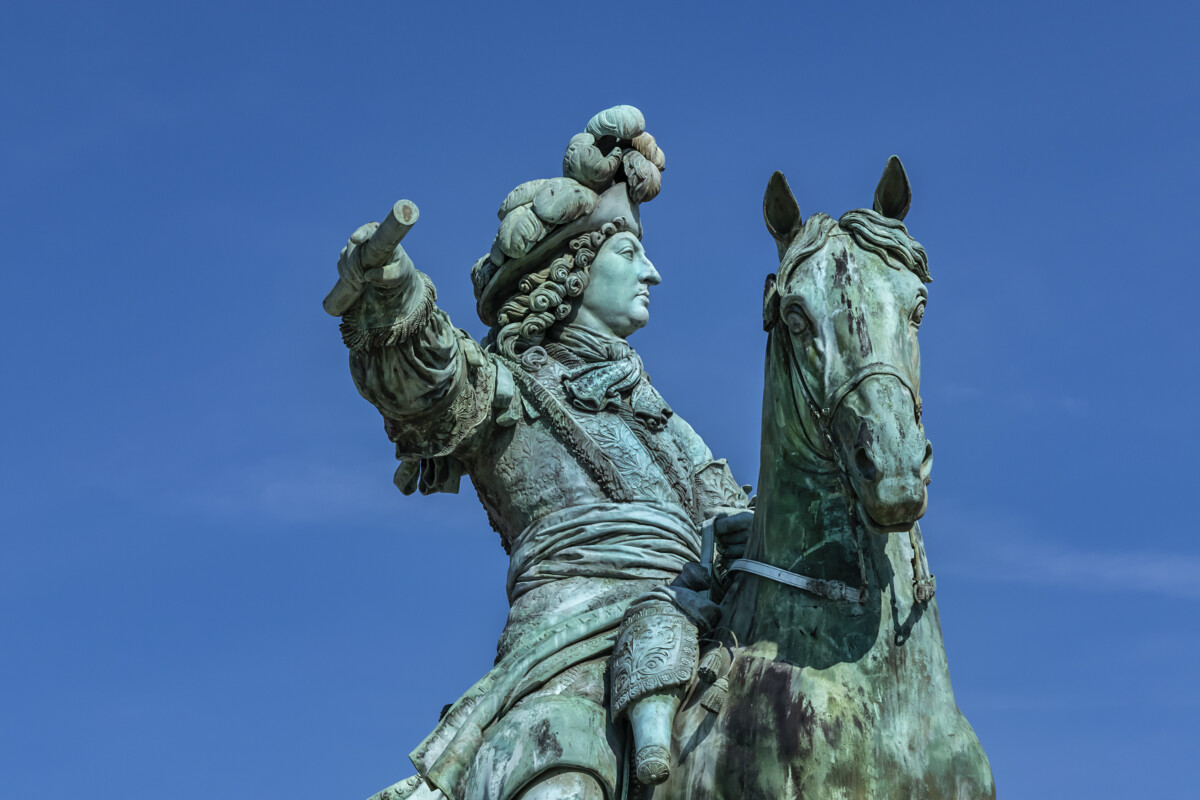Choosing between the Palace of Versailles and the Louvre Museum can be challenging, especially because both bear immense historical significance and architectural grandeur. The Palace of Versailles offers a glimpse into the opulent life of French royalty, with its stunning gardens and elaborate rooms. On the other hand, the Louvre, situated in the heart of Paris, boasts one of the world’s largest and most diverse art collections, including the famous Mona Lisa.
While Versailles invites you to wander through its sprawling grounds and experience the lavish lifestyle of kings and queens, the Louvre allows you to traverse centuries of art history under one roof. Each offers a unique visitor experience—whether it’s the serenity and splendor of Versailles or the vast, awe-inspiring galleries of the Louvre.
Many travelers consider both sites a must-visit, but if you’re pressed for time, your choice will depend on what intrigues you more: royal history and expansive landscapes or an unparalleled art collection in a bustling metropolis. Both experiences promise to be unforgettable.
Table of Contents
- Key Takeaways
- Historical Significance
- Architectural Grandeur
- Louvre Museum
- Palace of Versailles
- Size Comparison
- How Size Affects Your Visit
- Point to Remember
- Art Collections
- Paintings
- Statues
- Works of Art
- Visitor Experience
- Accessibility
- Guided Tours
- Amenities
- Accessibility and Convenience
- Cost and Time Considerations
- What is Best to Visit?
- Find Things to Do in Paris
- Find Accommodation
Key Takeaways
- Versailles showcases royal life and grand gardens.
- The Louvre hosts a renowned and diverse art collection.
- Your choice depends on your interest in history or art.
Historical Significance
Versailles and the Louvre aren’t just places but chapters in France’s story. Let’s quickly journey through time and see why these two landmarks matter.
The Louvre started as a fortress under Philip II in the late 12th century. It stood to protect Paris from invaders. Later, Charles V turned it into a royal residence. François I brought Leonardo da Vinci, along with the famous Mona Lisa, to the Louvre, making it a center of culture.

Louis XIV, the “Sun King,” preferred Versailles. He turned a simple hunting lodge into a magnificent palace. It’s got gardens that stretch as far as the eye can see. The Hall of Mirrors, with its 357 mirrors, is where you can almost hear the whispers of history.

Both places witnessed big moments. During the French Revolution, the Louvre was transformed from royal palace to national museum. Imagine the paintings and sculptures that survived the chaos. At the same time, Marie Antoinette was living her final days at Versailles before facing the guillotine.
In the 19th century, Napoleon III added his flair to the Louvre, expanding it and adding to its grandeur. Meanwhile, Versailles became the site of the National Assembly during some tumultuous years.
Versailles symbolizes absolute monarchy, while the Louvre represents the transformation of royal power into a public treasure trove. Each brick whispers a story, each room a piece of history.
See Related: Pack Curiosité
Architectural Grandeur
The Louvre and the Palace of Versailles are both stunning examples of French architecture and design, yet they offer very different styles and experiences. Each tells its own story through opulent rooms and lavish details.
Louvre Museum

The Louvre started as a fortress before becoming a royal palace and finally a museum. This building’s history is embedded in its architecture. The grand facade facing the Seine River is one of its most iconic sights. You’ll notice the Renaissance influence initiated by Pierre Lescot. These elements highlight the grandeur and authority that the palace wanted to convey during its time.
The Cour Carrée, a large square courtyard, and the glass Pyramid entrance are standout features. The Pyramid was a controversial addition in the 1980s, but now it’s a beloved symbol blending modern and classical styles. Each wing of the museum has distinct architectural details, as different kings contributed their own touches.
See Related: Private Tour of Saint Germain des Pres
Palace of Versailles

Versailles is about over-the-top opulence. Originally a hunting lodge, it became a sprawling palace under Louis XIV. The architecture reflects this ambition. The famous Hall of Mirrors, with its 357 mirrors, is a space of extraordinary splendor designed to impress visitors. It connects the King’s and Queen’s apartments, which are equally rich in decor.
The gardens are just as crucial to appreciate Versailles’s grandeur. André Le Nôtre designs them and includes geometrically aligned pathways, fountains, and statues stretching out from the palace. Don’t forget the smaller Trianon palaces scattered within the grounds, offering more intimate examples of royal life and design.
France’s historical ambition and architectural genius come alive in every corridor, room, and garden path of these two magnificent structures. While the Louvre’s transformation showcases layers of history, Versailles remains a testament to the absolute power and luxury of the French monarchy.
See Related: Best Tours of the Louvre Museum
Size Comparison
When you’re traveling to Paris, size definitely matters. And when it comes to comparing the size of Versailles and the Louvre, the numbers can be pretty mind-blowing.
The Palace of Versailles sits on an enormous estate. Imagine this: over 2,000 acres! The palace itself has a floor area of 51,000 square meters. It’s like a small city! Every corner you turn, there’s a new garden, a fountain, or a little hidden gem to explore.

On the other hand, the Louvre Museum may not have sprawling gardens, but it certainly packs a punch. Its 72,735 square meters of floor space make it the largest art museum in the world. You could spend days wandering through halls filled with art from all eras and never see the same thing twice.

How Size Affects Your Visit
- At Versailles, walking between the different parts of the estate can take a lot of time. You might want to plan a whole day, wear comfy shoes, and maybe even bring a picnic to enjoy in the gardens.
- At the Louvre, while you won’t be doing as much outdoor walking, navigating the vast museum can still be a workout. Picking up a map and planning which sections you want to see is a smart move.
Personal Tip: When I visited the Louvre last summer, I got lost in the Egyptian antiquities section for hours—it was like stepping back in time.
Point to Remember
- If you love nature and grand outdoor spaces, Versailles is your go-to.
- For an indoor adventure through centuries of art, the Louvre is unbeatable.
Art Collections
When comparing the art collections of the Louvre and Versailles, one must consider the vast array of masterpieces and objects each one holds. Both locations offer a rich glimpse into the past through their diverse and remarkable displays.
Paintings

The Louvre is home to some of the most world-renowned paintings, none more famous than Leonardo da Vinci’s Mona Lisa. You’ll find her enigmatic smile in a room where she’s often surrounded by curious visitors. It’s not just the Mona Lisa; the Louvre features works by Caravaggio and Raphael too.
At Versailles, the focus shifts slightly. The palace displays numerous portraits of Napoléon and Louis XIV, reflecting the history and grandeur of French royalty. While the collection here might not compete with the sheer number of masterpieces in the Louvre, the paintings are integral to the palace’s opulent decor. It’s like walking through a time capsule of French history.
Statues

When it comes to statues, the Louvre’s collection is legendary. It’s the home of the Venus de Milo, capturing beauty and mystery with her missing arms, and the Winged Victory of Samothrace, triumphantly perched on a staircase. These statues alone are worth the visit and offer a dive into ancient Greek artistry.
Versailles, however, presents sculptures with a regal flair. Statues of King Louis XIV on horseback can be found throughout the gardens, exuding power and dominance. The gardens themselves are filled with classical sculptures that complement the landscape. These aren’t just statues; they’re pieces of grand embroidery that tell the story of French grandeur.
Works of Art
Beyond paintings and statues, both the Louvre and Versailles offer stunning works of art in various forms. The Louvre holds countless treasures, from Michelangelo’s Dying Slave to the Code of Hammurabi. You’ll find artifacts that span centuries and continents, making the Louvre more than just an art museum—it’s a global heritage site.
Versailles, on the other hand, boasts the Hall of Mirrors, an artistic wonder in itself. The hall’s design, with its glistening mirrors and gold accents, reflects the zenith of Baroque architecture. The palace also showcases exquisite furniture, tapestries, and decorative arts that paint an elaborate picture of royal life.
See Related: Excursion to Giverny Monet’s Gardens and Versailles Palace with audioguide and lunch
Visitor Experience

Visiting both the Versailles and the Louvre offers unique experiences, from stunning gardens to world-famous artworks. Here’s a breakdown of what you can expect in terms of accessibility, guided tours, and amenities.
Accessibility
Reaching the Versailles is straightforward. You can take a metro or an Uber ride to the Palace. It’s typically a 30-40 minute ride from central Paris. Upon arrival, the sheer size of the park and gardens might be overwhelming but they are mostly flat and can be enjoyed by all visitors. There are lifts and ramps available for those requiring assistance. You can book tickets online to skip the line, which is highly recommended, especially during peak tourist seasons.
The Louvre is situated right in the heart of Paris, by the River Seine. It’s easily accessible by metro or even a leisurely walk if you’re in a nearby neighborhood. The security lines can be long, so purchasing skip the line tickets or a museum pass can save you a lot of time. Inside, the museum is vast but well signposted, helping you find your way around the extensive galleries. Elevators and ramps make navigating the different floors manageable.
Guided Tours
Versailles offers various guided tours that cover the grand apartments, the Hall of Mirrors, and the expansive gardens. Tours often provide historical context that enhances your experience, making you feel like you’ve stepped back in time. Booking a guided tour can also offer access to some areas not open to the general public. A good guide can make all the difference in appreciating the opulence and history around you.
At the Louvre, guided tours help navigate the immense collection. Whether it’s the Mona Lisa, the Venus de Milo, or the vast Egyptian antiquities collection, the right guide can illuminate the stories behind the masterpieces. Opting for an audio guide is another good alternative if you prefer exploring at your own pace. Smaller group tours can be quite engaging, allowing for more interaction and personalized insights.
Amenities
The Palace of Versailles has several cafés and restaurants within the grounds, so you don’t need to leave for a meal. Additionally, the gardens have picnic areas if you want a more relaxed meal. Restrooms are scattered around, but the lines can be long during peak times. Moreover, there are gift shops selling items ranging from books to souvenirs.
The Louvre is well-equipped with amenities such as restrooms, cafés, and gift shops. You can grab a bite or a cup of coffee at one of the museum’s cafes without having to step outside. The museum also has multiple restrooms on each floor, which are typically clean and well-maintained. Don’t forget to visit the bookstore and gift shop on your way out for unique art-related items to remember your visit.
Accessibility and Convenience

When you’re visiting Paris, one of the most essential things to think about is how easily you can get to the attractions you want to see. Both Versailles and the Louvre are incredible destinations, but they offer very different experiences in terms of accessibility and convenience.
Versailles
To get to Versailles from Paris, you can take the RER C train, which is about a 40-minute ride. It’s quite convenient if you’re near one of the RER C stations. Once you arrive, it’s a short walk to the palace gates. If trains aren’t your thing, consider an Uber ride—it’ll cost more but save some hassle.
You can also buy a Paris Pass which covers transport and entry to Versailles. Better yet, opt for a skip-the-line ticket to avoid the often long queues. Versailles has become much more accessible over the years, but keep in mind it’s not as centrally located as the Louvre.
Louvre
The Louvre, situated right in the heart of Paris, is incredibly easy to reach. You have a plethora of options including the Paris Metro, buses, or even a leisurely walk if you’re staying nearby. The closest Metro station is Palais Royal – Musée du Louvre, served by lines 1 and 7.
If you’re using a Museum Pass, the Louvre is included, making your visit not only seamless but also economical. The skip-the-line tickets are a lifesaver, especially during peak tourist seasons.
Tours and Amenities
Both locations offer a variety of tours and amenities. The Louvre has guided tours in multiple languages, and you can even download an app with an audio guide. Versailles also offers guided tours, and the estate is well-equipped with facilities like cafes and gift shops.
For both, consider booking a tour in advance to make the most of your visit. Whether you prefer the grandeur of Versailles or the artistic wealth of the Louvre, planning can save you a ton of time and effort.
See Related: Top Hotels Near the Louvre Museum in Paris
Cost and Time Considerations

When planning a visit to Versailles or the Louvre, cost and time are essential factors. Both sites offer unique experiences, so let’s break down the details.
Versailles entry tickets usually cost €18-€20. Guided tours are available, starting around €25, for a more immersive experience. It’s best to book your tickets online to skip the long lines.
The Louvre has tiered pricing. Standard tickets are priced at €17 if you buy them online. There are guided tours that can range from €30 to €50, giving you an expert-led tour through world-famous artworks.
Time needed to visit:
- Versailles:
- Plan to spend at least half a day here.
- The palace itself takes around 2-3 hours, and the gardens can extend your visit to 4-5 hours.
- The Louvre:
- You need at least 3 hours to see the highlights.
- Art lovers could easily spend a full day exploring its vast collections.
Buying tickets in advance online is a smart move for both locations. It not only saves you time but also assures your spot, especially during peak tourist seasons.
Quick Tips:
- Arrive early at Versailles to avoid the crowds.
- Use the museum map at the Louvre to prioritize must-see artworks.
- Consider evening openings at the Louvre, usually on Wednesdays and Fridays, for a less crowded experience.
What is Best to Visit?

When thinking about visiting Versailles or the Louvre, it depends on what you’re interested in.
If you love art, the Louvre is like a dream. With iconic pieces like the Mona Lisa and the Venus de Milo, your inner art lover will be thrilled. The museum is vast, offering hours of wandering through history.
But if you’re into history and architecture, Versailles is a must-visit. Walking through the Hall of Mirrors, you can almost hear whispers of royal gossip. The sheer grandeur of the palace is astounding.
Gardens enthusiast? Versailles wins hands down. The gardens are so massive that you might want to rent a bike or a golf cart. Imagine wandering through perfectly manicured lawns, fountains, and hidden groves—it’s like a scene from a fairy tale.
For those visiting in fall or winter, the Louvre might be the better choice. The weather can be chilly, and the Louvre offers a warm refuge with endless indoor exhibits. Plus, it’s near the Seine River, and you can easily combine your visit with a charming river cruise.
If you’re a casual traveler who’s just soaking up the Paris vibe, maybe throw in a visit to the Eiffel Tower nearby. Sometimes, a stroll along the Seine followed by popping into the Louvre feels like the perfect Paris day.
Versailles, being outside Paris, makes for a fantastic day trip. It’s an escape from the hustle and bustle of the city, a step back in time to the days of kings and queens.
Related Resources:
- How much are Tickets for Paris 2024? Pricing and Purchase Guide
- Where to Stay Outside of Paris: Top Options for Experiences
- Expert Tips for Sightseeing in Paris: Discover the Best Attractions
- When is the Best Time to Visit Paris?